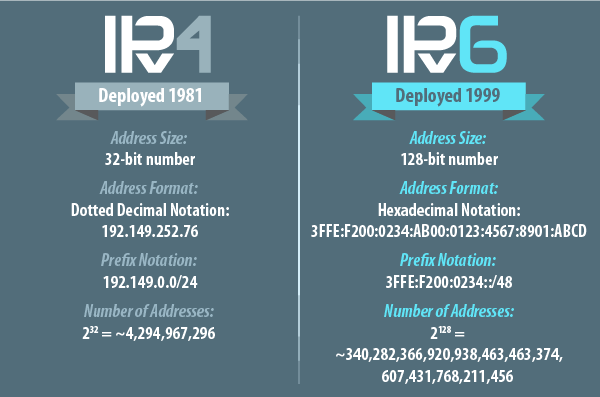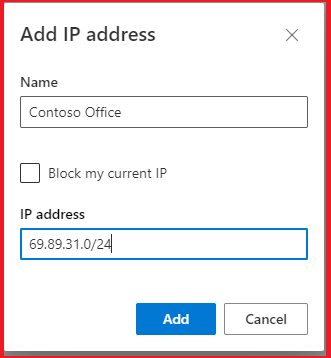In this article we will show you that what does 24 mean in ip address. so read this article. The number “24” refers to bits are contained in the network. A bit is a digit in the binary numeral system. From this, the number of bits left for address space can be calculated. As all IPv4 networks have 32 bits, and each “section” of the address denoted by the decimal points contains eight bits, “192.0. Every device connected to the Internet needs to have an identifier. Internet Protocol (IP) addresses are the numerical addresses used to identify a particular piece of hardware connected to the Internet.
Versions and differences of IP :
The two most common versions of IP in use today are Internet Protocol version 4 (IPv4). For IPv4, this pool is 32-bits (232) in size and contains 4,294,967,296 IPv4 addresses. and Internet Protocol version 6 (IPv6). Both IPv4 and IPv6 addresses come from finite pools of numbers.IPv6 address space is 128-bits (2128) in size, containing 340,282,366,920,938,463,463,374,607,431,768,211,456 IPv6 addresses.
A bit is a digit in the binary numeral system, the basic unit for storing information. Not every IP address in the IPv4 or IPv6 pool can be assigned to the machines and devices used to access the Internet. see below the defference between IPv4 and IPv6.
Difference between IPv4 and IPv6:

Network prefix:
IP addresses are divided into two parts a network section and a host section. The Network section identifies a particular network and the Host section identifies a particular node (for example, a certain computer) on a local area network (LAN). The size of the assigned ‘block’ is written after a diagonal (/) IP addresses are assigned to the network in ‘blocks’ of various sizes. which denotes the number of IP addresses contained in that block. For example, if an Internet Service Provider (ISP) is assigned “/16”, they receive approximately 64,000 IPv4 addresses. A “/26” network provides 64 IPv4 addresses. The lower the number after the diagonal, the more addresses in that “block”.

24 is called CIDR notation, it’s a different way to express the subnet mask. A subnet mask can be used for any IP, public, private, etc.; the /X has nothing do really whether the IP is public or private. /16, /24 is called CIDR notation, it’s a different way to express the subnet mask.
Electronic equipment processes IP addresses as a string of 32 bits that can either be 1 or 0. It only cares about the 1’s and 0’s; writing it as decimal numbers is for our benefit, not any router, computer, phone, etc. The 4 decimal numbers in an IPv4 is just a shorter way to write them so we don’t have to write all the 0’s and 1’s. CIDR just says we can simply say the number of 1 bits without writing out the four decimal numbers of the subnet mask. So you can write 192.168.0.5/24 instead of 192.168.0.5/255.255.255.0.
Subnets:
Subnets can be used to separate networks logically for different purposes such as business functions like Accounts Network, Sales Network etc. They can also be divided for security and access purposes as well as many other reasons. One of the key components for dividing and identifying subnets is the “subnet mask” or “netmask”.

Subnet Masking:
Take a network with addresses and split it into several smaller networks. Let’s say we have a network with only 8 addresses numbered 1 – 8. If we were to split it in half, we would have 2 networks of 4 addresses, the first {1, 2, 3, 4} and the second {5 , 6, 7, 8} and this very simple network and its two OK for subnetworks. We can clearly see which addresses belong to which group.
“CIDR or Classless Inter-Domain Routing is a notation and method for dividing and allocating IP address ranges and subnets. In CIDR notation an IP address looks like this: 10.0.0.0/24 with the CIDR part being /24.
it represents the 256 addresses 10.0.0.0 – 10.0.0.255. So what about the following 10.0.0.1/24? Well that would represent 10.0.0.1 – 10.0.1.0 right? Wrong. The range remains the same: 10.0.0.0 – 10.0.0.255. The difference now is that we are noting a specific host address (10.0.0.1) within that range.
CIDR notation allows for all 4,294,967,296 addresses to be broken down into subnet sizes of powers of 2. I.e. 2^0 = 1, 2^1 = 2, 2^2 = 4 and so on. Therefore you can’t have a network with 3 addresses for example. It also somewhat prevents overlaps within evenly divided networks, so if you took the entire available range of IP addresses you could divide it into 16,777,216 /24 subnets (4,294,967,296 / 256). Going back to our example of 10.0.0.0/24 the next available /24 would be 10.0.1.0/24. you will see a pattern:

I hope this article is helpful to you.
Thank you!!
